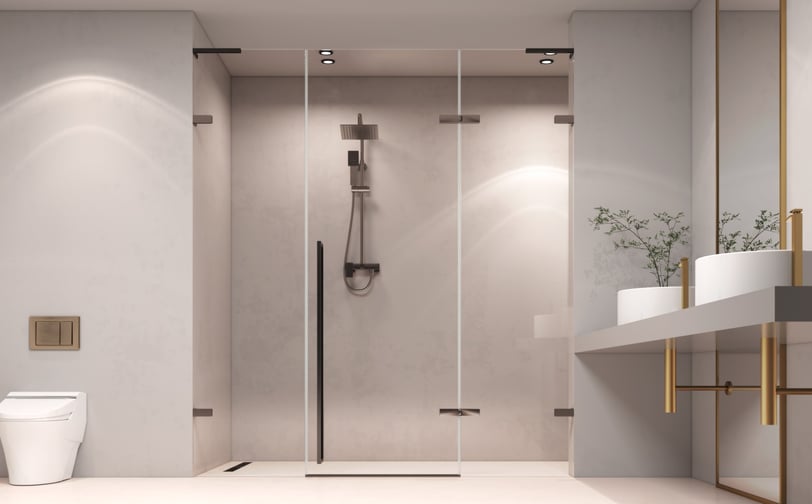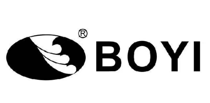European vs. Asian Shower Door Manufacturing: How B2B Wholesalers Can Balance Cost & Quality
4/21/20255 min read


Understanding the Global Supply Chain for Shower Doors
The shower door manufacturing industry has evolved into a complex web of global supply chains, with significant players located across Europe and Asia. Each region brings unique advantages and challenges that impact production capabilities and overall costs. Europe is renowned for its commitment to high-quality craftsmanship and innovative designs, often catering to a more premium market segment. Companies in this region typically focus on stringent quality control measures, which can result in higher production costs but also enhanced durability and aesthetic appeal.
Conversely, Asia presents a diverse manufacturing landscape characterized by competitive labor costs and substantial resource availability. Countries such as China, India, and Vietnam leverage advanced manufacturing techniques and a vast workforce to produce shower doors at a lower cost while still maintaining acceptable quality standards. This pricing advantage often attracts B2B wholesalers seeking to balance cost efficiency with quality, particularly in the mid-range market.
Geographical factors also play a critical role in shaping the supply chain for shower doors. Proximity to raw materials and established shipping routes can significantly reduce transit times and costs. For instance, European manufacturers have easier access to high-quality glass sources within the continent, while Asian manufacturers frequently utilize abundant local resources, which reduces dependency on imports. Understanding these geographical nuances is crucial for wholesalers aiming to optimize their sourcing strategies.
Labor costs represent another influential factor in the shower door market. European labor is relatively expensive, reflecting higher living wages and strict labor regulations, whereas Asian countries typically enjoy a more cost-efficient labor pool. However, this cost differential can have direct implications not just for pricing but also for the timely delivery of products and adherence to quality standards. B2B wholesalers must navigate these factors carefully to succeed in an increasingly competitive international marketplace.
Cost Analysis: European vs. Asian Manufacturing
When evaluating the cost implications of manufacturing shower doors in Europe versus Asia, several key factors must be considered. Firstly, the cost of raw materials can significantly vary between these two regions. European manufacturers often use premium materials, leading to higher upfront costs. Conversely, many Asian manufacturers can source materials at lower prices due to abundant local supply and less stringent regulations. This initial price difference can be crucial for B2B wholesalers aiming to optimize their budget.
Labor costs are another vital element in this cost analysis. Countries in Asia, particularly those like China and Vietnam, typically offer lower labor rates compared to European nations. This disparity can translate into significant savings in manufacturing expenses. However, it is essential to recognize the potential impact on quality, as lower labor costs may result in varying standards of craftsmanship. Wholesalers should thus weigh the trade-offs between cost savings and product quality when selecting a manufacturing partner.
Shipping costs also play a crucial role in the overall expenditure. Shipping from Asian countries tends to incur higher international freight charges, especially for heavy items like shower doors. Additionally, tariffs imposed on imported goods can further affect the final pricing, making it vital for wholesalers to factor these into their cost analysis. Hidden costs such as customs duties and insurance should not be overlooked, as they can accumulate to create a substantial financial burden.
Quality control expenses and lead times are often underestimated factors in this equation. European manufacturers generally adhere to stricter quality control measures, potentially resulting in higher costs but also fewer defects and returns. In contrast, Asian manufacturers may have shorter lead times, allowing for faster market entry but could compromise on quality. By carefully considering these hidden costs, B2B wholesalers can establish a more comprehensive understanding of the total cost of ownership, leading to informed decisions that balance both cost and quality effectively.
Quality Considerations in Shower Door Manufacturing
Quality plays a crucial role in the manufacturing of shower doors, particularly when evaluating the differences between European and Asian production methods. European manufacturers have built a reputation for adhering to stringent quality standards and regulations. This is often reflected in the materials they employ, such as high-grade tempered glass and robust aluminum frames. The rigorous testing and certification processes in Europe, like the EN 12150 standard for glass safety, ensure that products meet essential safety and durability criteria. Moreover, European craftsmanship typically emphasizes attention to detail, resulting in shower doors that not only perform well but also feature aesthetically pleasing designs.
Conversely, while many Asian manufacturers are increasingly striving to improve quality standards, the variance can be significant based on the specific country and manufacturer. Many Asian countries, such as China and Vietnam, have advanced their manufacturing capabilities but may still face challenges related to consistency and regulatory compliance. Nonetheless, top-tier Asian manufacturers are increasingly adopting international standards and certifications, including ISO 9001, to enhance their credibility in the B2B market. Such certifications signify a commitment to quality management systems that meet customer requirements.
The reputation of manufacturers in both regions significantly influences the perception of quality among wholesalers and end consumers alike. European brands often leverage their historical emphasis on quality to command higher price points. Meanwhile, many Asian manufacturers focus on cost efficiency and accessibility, which can appeal to budget-conscious buyers while offering a range of quality levels. Ultimately, B2B wholesalers must navigate these quality considerations, assessing the long-term value of investing in higher-quality European products against the cost-effectiveness of sourcing from Asia. Balancing these factors is essential to meet diverse client expectations while maintaining profitability.
Strategies for B2B Wholesalers: Balancing Cost and Quality
In the competitive landscape of shower door manufacturing, B2B wholesalers face the challenge of balancing cost and quality to meet consumer demands while maintaining profitability. One effective strategy is to diversify the supplier base, which mitigates risks associated with over-reliance on a single manufacturer. By sourcing from both European and Asian manufacturers, wholesalers can compare quality and pricing, ultimately allowing for more informed purchasing decisions. This diversification enables wholesalers to adapt to market fluctuations and supply chain issues, ensuring a steady inventory of shower doors that meet quality standards.
Establishing long-term relationships with reliable suppliers is another integral strategy. These partnerships can lead to better pricing due to trust and volume commitments, while also allowing for collaborative quality control processes—ensuring that the produced shower doors consistently meet the desired specifications. Over time, strong relationships can lead to improved communication, quicker response times, and more favorable terms that benefit the wholesaler's operations.
Moreover, wholesalers should leverage technology to enhance their procurement processes. Utilizing inventory management software can provide valuable insights into stock levels, helping to align purchasing decisions with demand patterns. Advanced analytics tools may also allow wholesalers to assess supplier performance over time, identifying those that consistently deliver quality products at competitive prices. Incorporating e-procurement solutions can streamline the ordering process, reducing time and effort in sourcing shower doors, thereby improving overall efficiency.
Lastly, continuous market research is crucial for adapting to shifting consumer preferences. By staying informed about industry trends, wholesalers can anticipate changes in demand and adjust their sourcing strategies accordingly. This proactive approach, combined with a commitment to quality and cost-effectiveness, will ensure that B2B wholesalers successfully navigate the challenges of shower door manufacturing.
